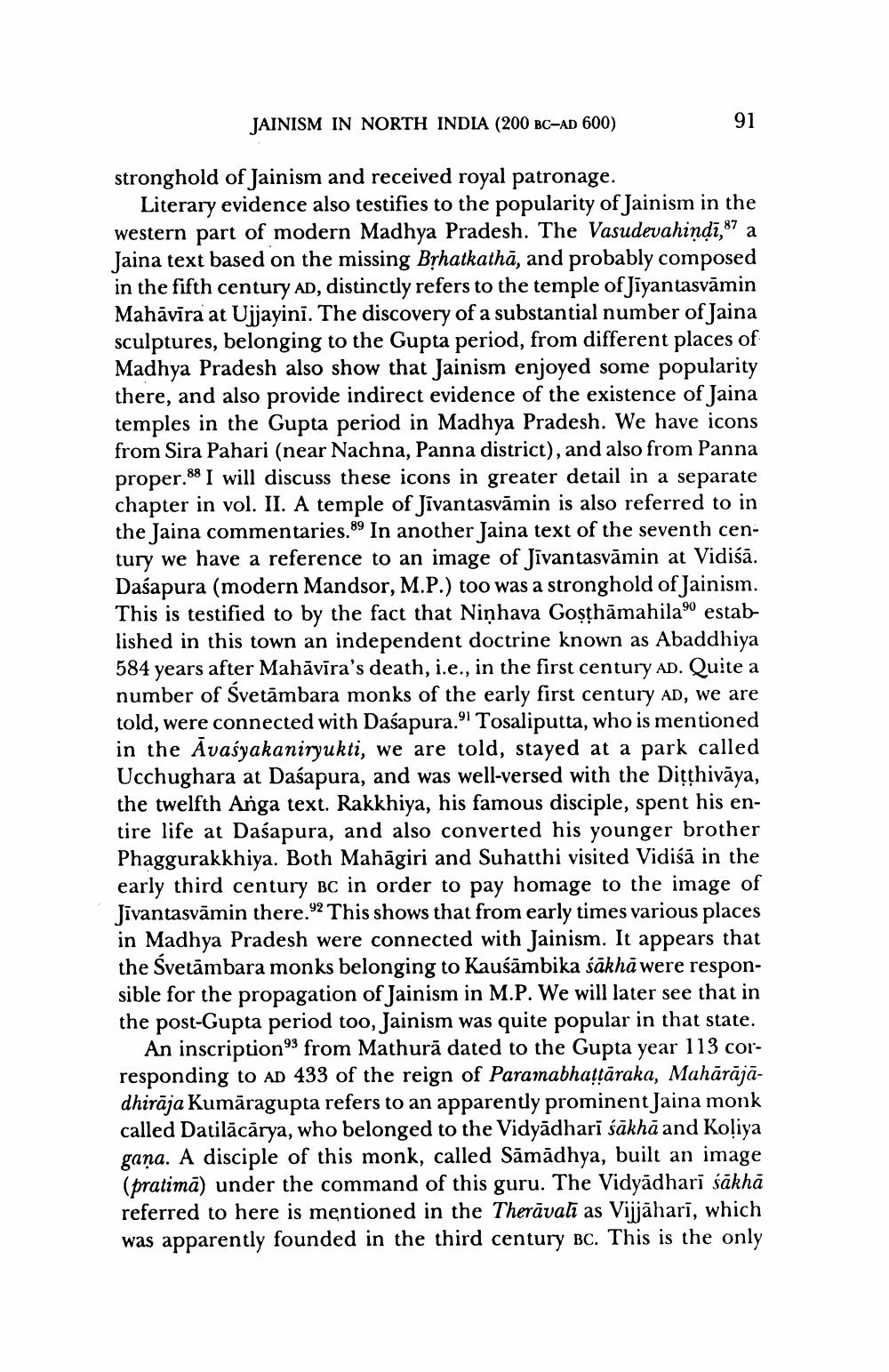________________
91
JAINISM IN NORTH INDIA (200 BC-AD 600)
stronghold of Jainism and received royal patronage.
Literary evidence also testifies to the popularity of Jainism in the western part of modern Madhya Pradesh. The Vasudevahindi,87 a Jaina text based on the missing Bṛhatkathā, and probably composed in the fifth century AD, distinctly refers to the temple of Jiyantasvamin Mahāvīra at Ujjayini. The discovery of a substantial number of Jaina sculptures, belonging to the Gupta period, from different places of Madhya Pradesh also show that Jainism enjoyed some popularity there, and also provide indirect evidence of the existence of Jaina temples in the Gupta period in Madhya Pradesh. We have icons from Sira Pahari (near Nachna, Panna district), and also from Panna proper. 88 I will discuss these icons in greater detail in a separate chapter in vol. II. A temple of Jivantasvāmin is also referred to in the Jaina commentaries.89 In another Jaina text of the seventh century we have a reference to an image of Jivan tasvamin at Vidiśā. Dasapura (modern Mandsor, M.P.) too was a stronghold of Jainism. This is testified to by the fact that Ninhava Goṣṭhāmahila9 established in this town an independent doctrine known as Abaddhiya 584 years after Mahāvīra's death, i.e., in the first century AD. Quite a number of Śvetāmbara monks of the early first century AD, we are told, were connected with Dasapura.91 Tosaliputta, who is mentioned in the Avasyakaniryukti, we are told, stayed at a park called Ucchughara at Daśapura, and was well-versed with the Diṭṭhivaya, the twelfth Anga text. Rakkhiya, his famous disciple, spent his entire life at Dasapura, and also converted his younger brother Phaggurakkhiya. Both Mahagiri and Suhatthi visited Vidiśă in the early third century BC in order to pay homage to the image of Jivantasvāmin there. 92 This shows that from early times various places in Madhya Pradesh were connected with Jainism. It appears that the Svetambara monks belonging to Kausāmbika śākhā were responsible for the propagation of Jainism in M.P. We will later see that in the post-Gupta period too, Jainism was quite popular in that state.
An inscription from Mathură dated to the Gupta year 113 corresponding to AD 433 of the reign of Paramabhaṭṭāraka, Mahārājādhirāja Kumāragupta refers to an apparently prominent Jaina monk called Datilācārya, who belonged to the Vidyadharī śākhā and Koliya gana. A disciple of this monk, called Sāmādhya, built an image (pratima) under the command of this guru. The Vidyadharī sākhā referred to here is mentioned in the Theravali as Vijjāharī, which was apparently founded in the third century BC. This is the only




